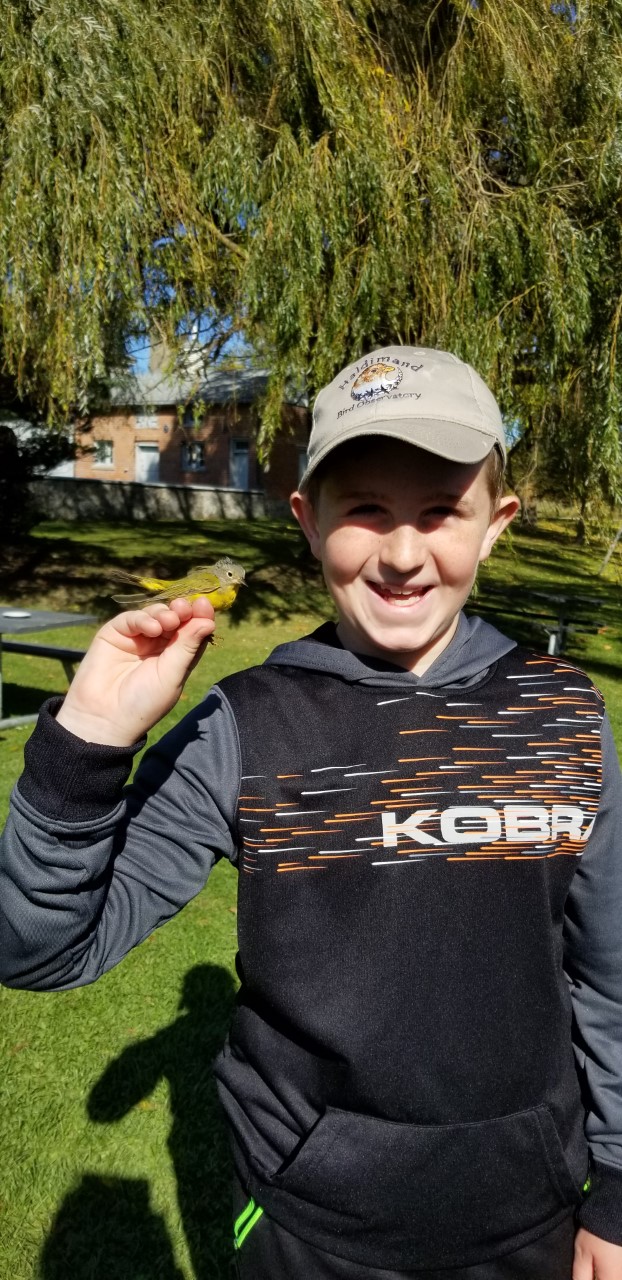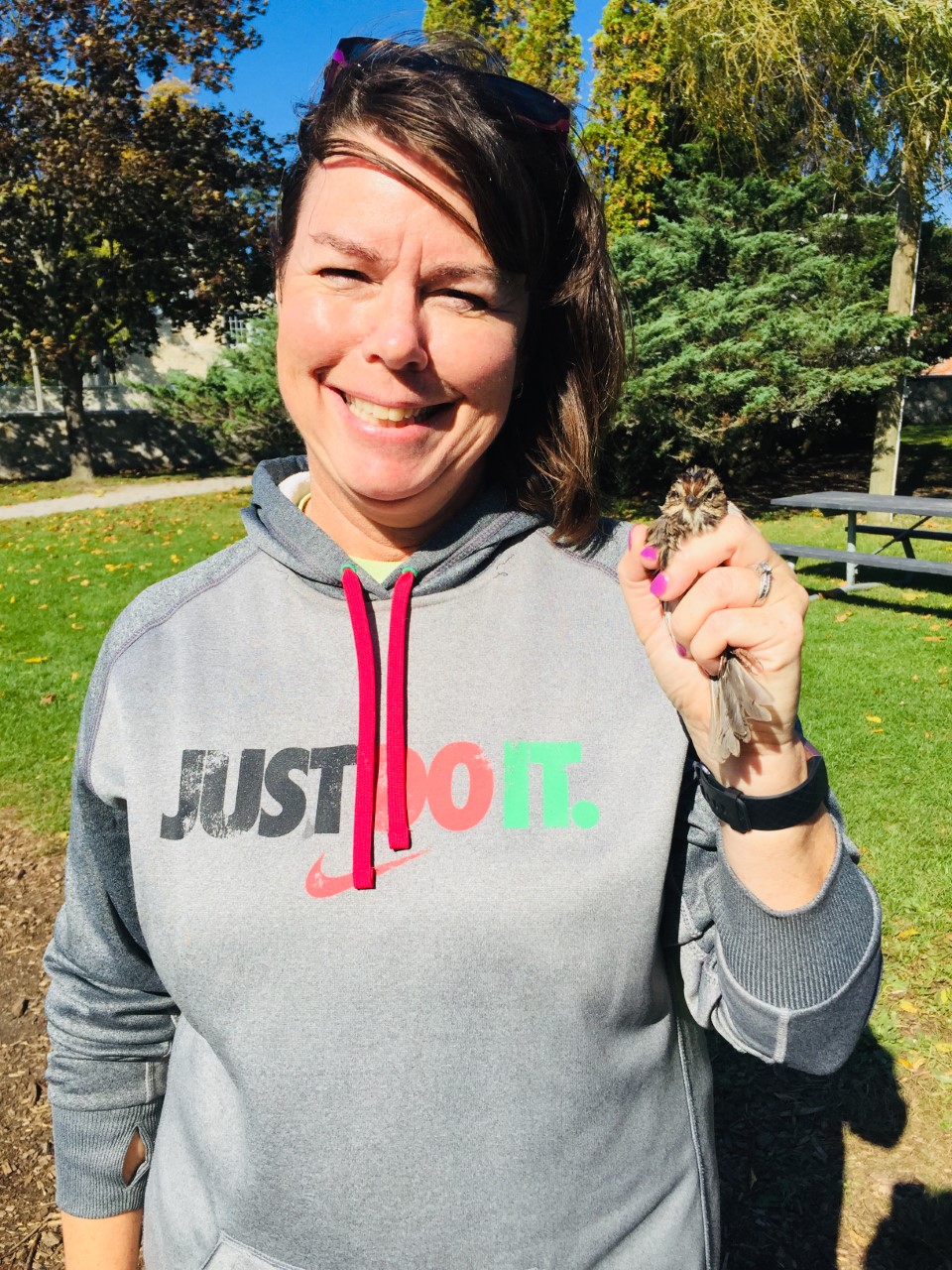

In the Spring you get the “Dawn Chorus” – at first light singing males announce they’re alive and well and on territory; it can last for over an hour. In the later Fall, when sparrows are on the move, the equivalent is much less dramatic, more short-lived, but just as exciting. When I set out to open nets for the last couple of days it has been dark and, initially, dead quiet (except for a young Great Horned Owl in the background). But at a certain point – when it is first showing some light – sparrows start up with their call notes from the dogwood shrubs or Butterfly Meadow wildflower tangles announcing that they’re alive and well and ready to start the day. This usually last for only about 10 – 15 minutes and then stops abruptly. The exciting part is that you know that if the nets are opened before the “chip chorus” stops then you have a good chance of catching as the birds will begin to move out to feed. And that’s what happened this morning – I had caught 4 White-throated Sparrows before I had even finished opening the Meadow nets and had to go back to the lab to get bags by which time the nets were filling. We had two very good rounds before the rising sun and wind slowed things down.
Although we banded more than twice the number of birds as yesterday (83 vs 40) the diversity of the birds around the site was quite diminished; yesterday we sighted 50 species, today just 37 even though we had multiple Pipit eyes and ears helping with the census.
I think it’s safe to say that American Goldfinches (the “Golden Horde”) have made their return; they’re around both feeders in good numbers and accounted for almost a third of the birds banded today.
Banded 83:
1 Winter Wren
7 Golden-crowned Kinglets
16 Ruby-crowned Kinglets
4 Hermit Thrushes
2 American Robins
1 Nashville Warbler
10 Myrtle Warblers
4 Song Sparrows
1 Swamp Sparrow
12 White-throated Sparrows
25 American Goldfinches
ET’s: 37 spp.
Rick
